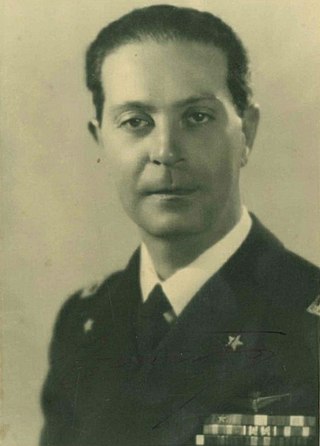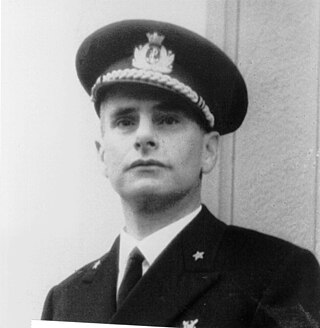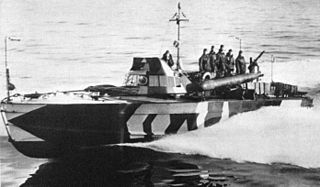
The Italian Social Republic, known prior to December 1943 as the National Republican State of Italy, but more popularly known as the Republic of Salò, was a Nazi-German puppet state with limited diplomatic recognition that was created during the latter part of World War II. It existed from the beginning of the German occupation of Italy in September 1943 until the surrender of German troops in Italy in May 1945. The German occupation triggered widespread national resistance against it and the Italian Social Republic, leading to the Italian Civil War.

Human torpedoes or manned torpedoes are a type of diver propulsion vehicle on which the diver rides, generally in a seated position behind a fairing. They were used as secret naval weapons in World War II. The basic concept is still in use.

The Decima Flottiglia MAS was an Italian flotilla, with marines and commando frogman unit, of the Regia Marina. The acronym MAS also refers to various light torpedo boats used by the Regia Marina during World War I and World War II.

Francesco Mimbelli was an Italian naval officer who fought in World War II.

Motoscafo armato silurante, alternatively Motoscafo antisommergibili and commonly abbreviated as MAS, was a class of fast torpedo-armed vessels used by the Regia Marina during World War I and World War II. Originally, "MAS" referred to motobarca armata SVAN, Società Veneziana Automobili Navali.

The CB class was a group of midget submarines built for the Italian Navy during World War II. However, they were also used by several other navies, seeing action in the Mediterranean and in the Black Sea.
The CA class were a group of midget submarines built for the Italian Navy during World War II.

Leonardo da Vinci was a Marconi-class submarine of the Italian navy during World War II. It operated in the Atlantic from September 1940 until its loss in May 1943, and became the top scoring non-German submarine of the entire war.

The explosive motorboat MT also known as barchino, was a series of small explosive motor boats developed by the Italian Royal Navy, which was based on its predecessors, the prototype boat MA and the MAT, an airborne prototype. Explosive motorboats were designed to make a silent approach to a moored warship, set a collision course and run into full gear until the last 200 or 100 yards to the target, when the pilot would eject after blocking the rudder. At impact, the hull would be broken amidships by a small explosive charge, sinking the boat and the warhead, which was fitted with a water-pressure fuse set to go off at a depth of one metre.

The MTSM motor torpedo boat was a series of small motor torpedo boats developed by the Italian Royal Navy during World War II.

Luigi Biancheri was an Italian admiral during World War II.

Antonio Legnani was an Italian admiral during World War II.

Mario Falangola was an Italian admiral during World War II.

Mario Arillo was an Italian naval officer during World War II.

Licio Visintini was an Italian naval officer during World War II. Visintini was decorated for his operations against Allied shipping in Gibraltar during the Battle of the Mediterranean. His brother Mario Visintini was a famous flying ace; both were killed during the war.

Luigi Faggioni was an Italian naval officer during World War II, and an admiral in the postwar Marina Militare.

Italian submarine Gondar was an Adua-class submarine built for the Royal Italian Navy during the 1930s. It was named after a city of Gondar in northern Ethiopia.

Italian submarine Ambra was a Perla-class submarine built for the Royal Italian Navy during the 1930s. She was named after the gemstone amber.

Mario Giorgini was an Italian naval officer during World War II. He commanded the I Flottiglia MAS, the special operations unit of the Royal Italian Navy, from February 1940 until his capture during an attempt to carry out a manned torpedo raid on Alexandria in September of the same year. After the war he became an admiral in the Marina Militare.

The Quarta Flottiglia MAS was an Italian flotilla of the Regia Marina created during the Fascist regime.





































